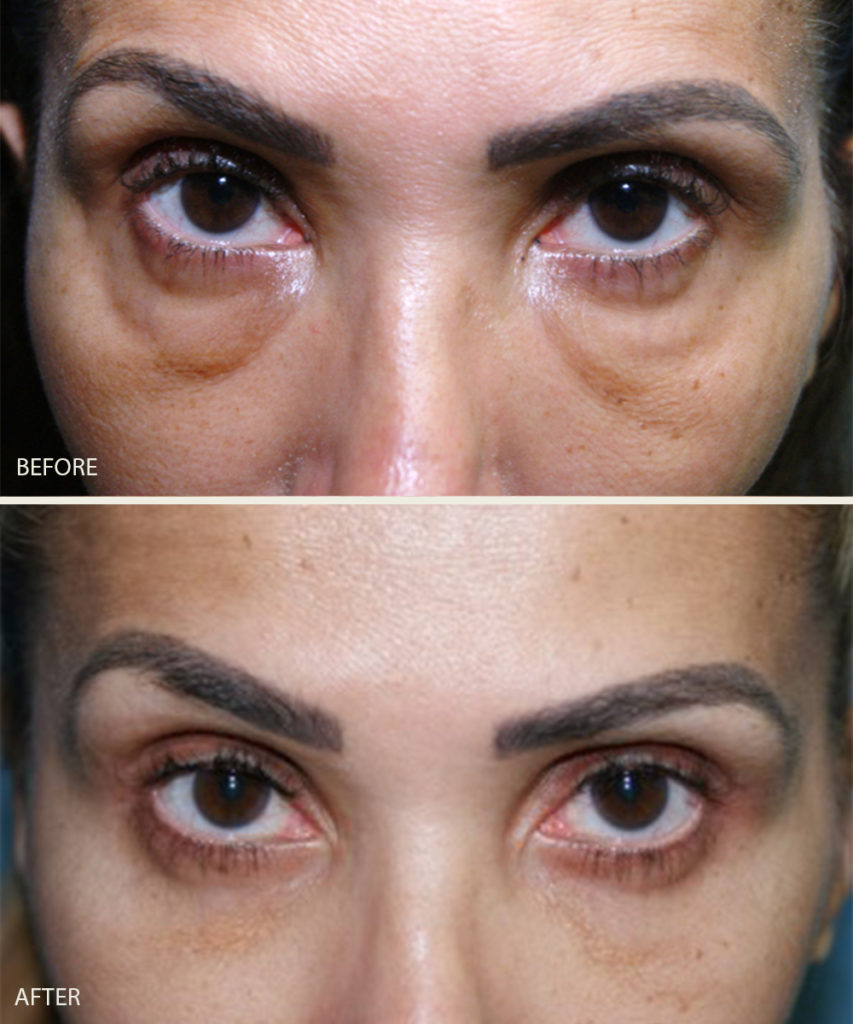In this era of masks and correcting eye issues that bother us, are we over-filling under the eyes? According to Boca Raton, FL oculoplastic surgeon Steven Fagien, MD, the answer is “yes.” Dr. Fagien does admit that the application of under-eye filler, used off-label, can correct some issues in some patients, but he strongly insists that it’s not a one-syringe-fits-all solution for many. What he’s seeing at his practice is the over-use of filler and patients who end up needing additional correction in order to look natural again and may require more comprehensive treatments to correct their issues. Here, he breaks down many misconceptions surrounding our new obsession with under-eye injections.
Bags or Hollows
Firstly, Dr. Fagien notes that the under-eye hollow concern is a novel one that has been propagated by social media and misinformation. “Lower-eye bags are one of the most common presenting features, for any plastic surgeon, other than liposuction. If someone doesn’t like the way their lower eyelids look—some people will call them bags, some call them pockets and some will call them hollows” says Dr. Fagien. “We never talked about hollows 20 or 30 years ago, but the reason the term ‘hollows’ have become so prevalent now is because we have a perceived ‘solution,’ which is filling them with “filler.” Like most aging areas of the face, the illusion of ‘hollows’ is largely due to shadows that are created by contour abnormalities.”
The Under-Eye Filler Fix
Dr. Fagien believes that more often what we think are hollows, are due to the appearance of shadows. “In many ways, the darkness and relative depression under the bag appears deep, when actuality it’s more likened to being at sea level while sitting next to a mountain. So, in some ways they are a result of the shadows that are created from light, which is a common cause of dark circles. This makes it look like there’s depth to the dark circle when there either really isn’t a depression or it isn’t as deep as it seems to be.”
When he’s performing surgery on a patient with under-eye bags, Dr. Fagien says he usually does not fill this area by injection, but rather blends the “hollows” into the rest of the under-eye landscape. “I’m just blending contours just like you do anywhere in the face. When you surgically blend contours by creating gentle slopes and curves, you restore the natural shape of the lower eyelid. With this approach, you illuminate the entire lid-cheek junction, where the eyelid blends to the cheek, with a soft natural curve which makes the dark circles disappear. When you correct these perceived hollows with fillers, you create an unnatural eyelid contour.”

Creating Unnatural Contours
“When you correct dark circles with fillers, there is an attempt to temporarily inflate the perceived depression to allow light to reflect in this region to improve the appearance,” he explains. “When you look at young, beautiful women, however, there’s usually a slight concavity that begins near the eyelashes and continues as a gentle slope towards the cheek. As we age, we lose this natural slope and shape. Fillers might make things look a bit better but they can create many issues including visible product and long-term swelling that can be difficult to correct. Many patients tell me that their first injection seemed to improve the situation but ended up appearing worse with time or after repeated treatment.”
According to the surgeon, many former under-eye filler patients who have been treated by others come to see him for a lower blepharoplasty as a long-term solution to rejuvenate the eyes in a beautiful, natural-looking way. “We’ve gotten more sophisticated because we understand the aging process a bit better and what it takes to make people look both natural and their best. Many patients today will be better off achieving a more permanent result without the overuse and maintenance of filler, while getting their youthful-looking facial contours back.”
Find a Doctor
Find a NewBeauty “Top Beauty Doctor” Near you
